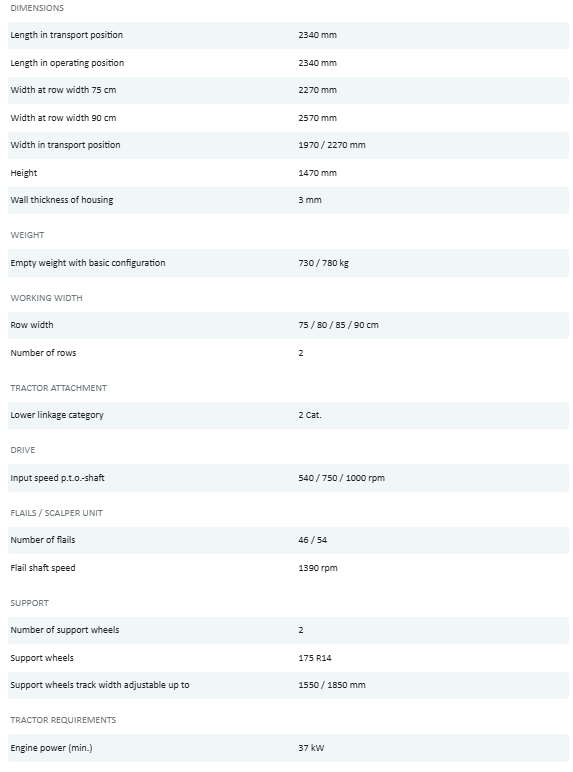TOPPA 200
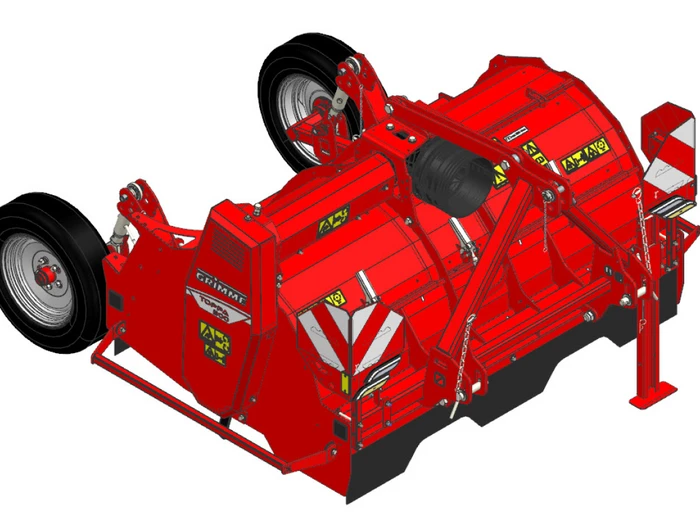
Harvest Preparation
TOPPA 200
In order to promote uniform ripening of the tubers, haulm reduction can be carried out two to three weeks before harvesting. In addition to preventing the transmission of viral infections from the haulm into the tuber, a good skin set on the tubers can be achieved to improve storability. Instead of or as a supplement to chemical siccation, GRIMME offers a sustainable solution of haulm topping.
By using a haulm topper, the haulm of the potatoes is mechanically crushed and deposited between the ridges. Careful placement of the haulm between the ridges is important. Epecially if the stems of the potato plants are to be treated with other herbicides afterwards. A further advantage is the reduced risk of blockage at the intake of the harvester and the resulting increased throughput capacity in case of extreme masses of haulm.
Using the TOPPA 200, the haulm of two rows/ridges can be topped in one pass. If the machine is used in ‘solo operation’ (without a following harvester), the TOPPA can be attached to both the front and rear of the tractor. It is also possible to combine the TOPPA 200 at the front with the TOPPA 600 Combi at the rear, so that up to six rows can be topped in one pass. In addition to all common international row- and track widths, it is also possible to fit a flail pattern for potatoes which are cultivated in (separated) beds.
Product Highlights
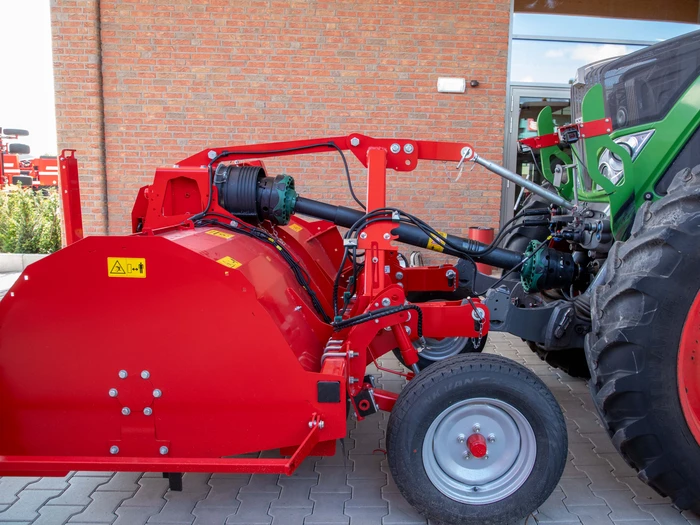
Three-point linkage extension
The optional three-point linkage extension is particularly suitable for front attachment. This allows the lifting height of the machine to be increased. In addition, the angle of the PTO shaft is reduced, which increases the service life.
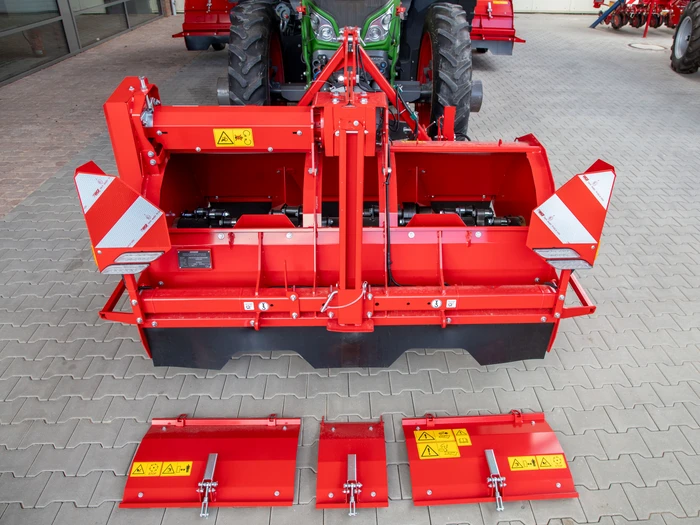
Large maintenance flaps
Large maintenance flaps across the entire width of the housing make it easier to clean and change the flails.
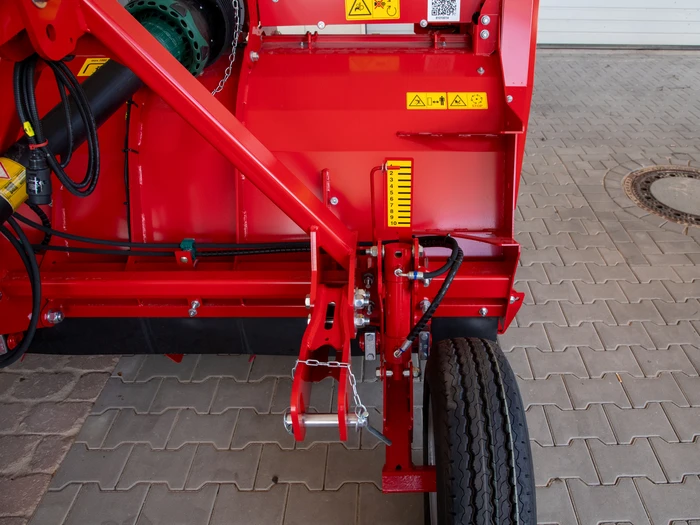
Optimum working height
The haulm topper is guided by the tractor's three-point hydraulic system and 175 R14 support wheels. The height of the support wheels is adjusted either mechanically via a spindle or hydraulically from the cab. The set working depth can easily be read off and checked at a scale.
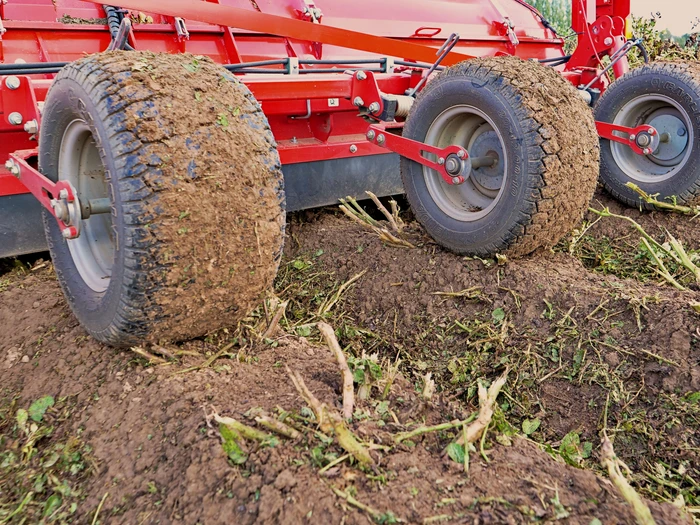
RidgeRunner against green tubers
Optionally, superficial ridge pressing wheels can be selected for each row, which close cracks on the top of the ridges after haulm has been topped. The individual suspension enables optimum adaptation to each row. The extremely low tyre pressure allows the wheels to roll in a targeted manner so that cracks in the ridges are closed. The potatoes can thus be protected from direct sunlight and the risk of green tubers can be reduced. At the same time, fulling ensures that the wheels clean themselves.
Technical Specifications
Standard equipment
- 3-point linkage for front or rear mounting
- At row width 75 cm: Housing width is 1.8 m
- At row width 90 cm: Housing width is 2.1 m
- Heavy duty V-belt drive (4 times)
- Heavy duty gearbox to give up to 1300 rpm rotor speed at 540, 750 or 1000 rpm PTO shaft drive.
- Number of flails: 46 flails (54 flails in case of housing width of 2.1 m)
- Haulm discharge between the rows or to wheelings
- Single-driven flail shaft with free wheel
- 2 support wheels fixed or swivel (option)
By using this website you agree to our Privacy Policy.

